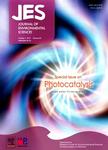Prediction of effluent concentration in a wastewater treatment plant using machine learning models
Prediction of effluent concentration in a wastewater treatment plant using machine learning models作者机构:School of Environmental Science and EngineeringGwangju Institute of Science and Technology (GIST) School of Urban and Environmental Engineering Ulsan National Institute of Science and Technology HECOREA. INC
出 版 物:《Journal of Environmental Sciences》 (环境科学学报(英文版))
年 卷 期:2015年第27卷第6期
页 面:90-101页
核心收录:
学科分类:083002[工学-环境工程] 0830[工学-环境科学与工程(可授工学、理学、农学学位)] 08[工学]
基 金:supported by a grant (12-TI-C04) from Advanced Water Management Research Program funded by Ministry of Land Infrastructure and Transport of Korean government
主 题:Artificial neural network Support vector machine Effluent concentration Prediction accuracy Sensitivity analysis
摘 要:Of growing amount of food waste, the integrated food waste and waste water treatment was regarded as one of the efficient modeling method. However, the load of food waste to the conventional waste treatment process might lead to the high concentration of total nitrogen(T-N) impact on the effluent water quality. The objective of this study is to establish two machine learning models-artificial neural networks(ANNs) and support vector machines(SVMs), in order to predict 1-day interval T-N concentration of effluent from a wastewater treatment plant in Ulsan, Korea. Daily water quality data and meteorological data were used and the performance of both models was evaluated in terms of the coefficient of determination(R^2), Nash-Sutcliff efficiency(NSE), relative efficiency criteria(d rel). Additionally, Latin-Hypercube one-factor-at-a-time(LH-OAT) and a pattern search algorithm were applied to sensitivity analysis and model parameter optimization, respectively. Results showed that both models could be effectively applied to the 1-day interval prediction of T-N concentration of effluent. SVM model showed a higher prediction accuracy in the training stage and similar result in the validation ***, the sensitivity analysis demonstrated that the ANN model was a superior model for 1-day interval T-N concentration prediction in terms of the cause-and-effect relationship between T-N concentration and modeling input values to integrated food waste and waste water treatment. This study suggested the efficient and robust nonlinear time-series modeling method for an early prediction of the water quality of integrated food waste and waste water treatment process.



